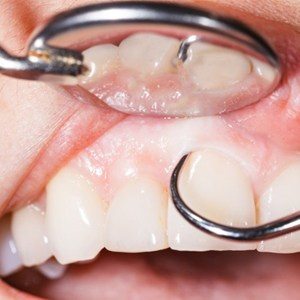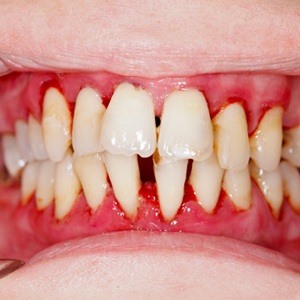Scaling and Root Planing – Carrollton, TX

Do I Have Gum Disease?

Based on recent reports, a majority of Americans over the age of 30 have some form of gum disease. What’s startling is that many people don’t realize they have it until a dentist tells them. If you notice any of the following symptoms, it’s likely time to visit our office for treatment:
- Red, tender or swollen gums
- Persistent bad breath even after practicing oral care
- Bleeding gums while brushing, flossing or eating
- Receding gums or teeth that appear longer than usual
- A change in the way your dentures fit
- Pain while biting down
In the early stages, gum disease is largely noticeable after you floss, which typically results in minimal bleeding. This early stage, known as gingivitis, can be reversed with improved oral care habits and a professional cleaning. But failing to address the more significant stages, such as moderate to severe periodontitis, carries serious implications.
Why Do I Need Scaling and Root Planing?

If you’re living with periodontitis, regardless of the severity, failing to get the treatment you need can result in permanent damage to your oral structures. These include bone loss, tooth loss and an increased risk of other more serious conditions like heart disease, pregnancy complications and respiratory issues.
Furthermore, at-home cleaning or a traditional cleaning at our office is not enough to address the extensive plaque that’s developed above and below the gumline. Instead, a deep cleaning is needed, typically over the course of multiple appointments.
What Does Treatment Entail?

Deep cleaning consists of both scaling and root planing, two techniques proven to benefit patients with chronic periodontitis. Scaling is performed to remove built-up plaque and tartar (calcified plaque) from below and above the gumline. After breaking apart this plaque, the gums should become less inflamed. Root planing is performed to smooth out the tooth roots which have become detached from the gums. This reduces future gum recession and allows the gums to heal more effectively. We may also apply an antibiotic to the gums during deep cleaning to promote additional healing.
Deep cleaning treatment can take anywhere between one and four visits to complete depending on how extensive your gum disease may be. These additional visits allow us to be as thorough as possible as well as confirm that treatment is working effectively.
